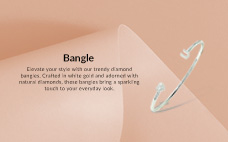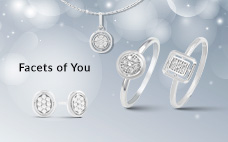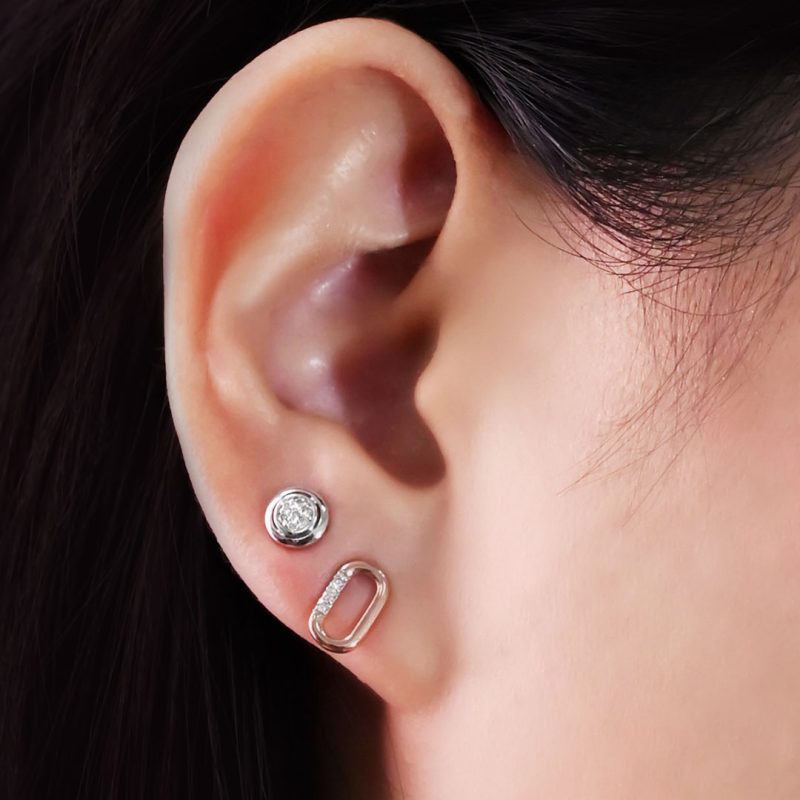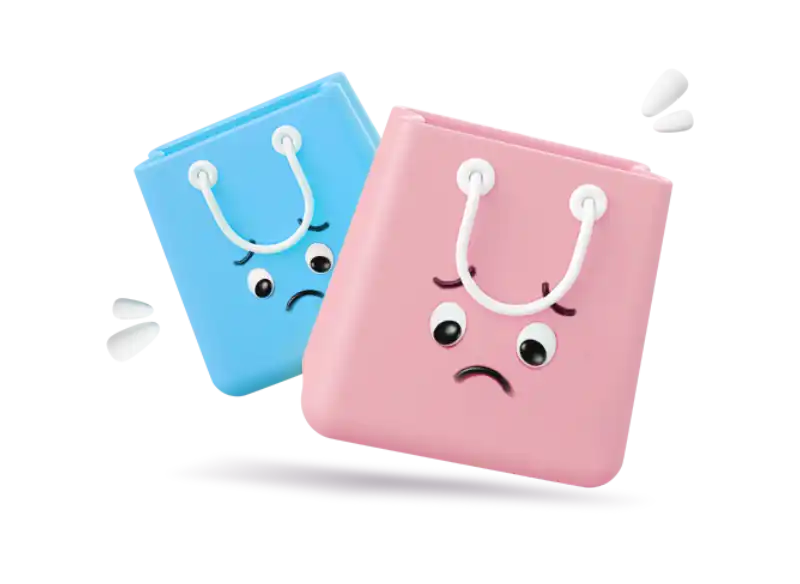Many shoppers today are comparing diamond vs moissanite vs lab-grown when searching for brilliant, long-lasting jewellery. While they may look similar at a glance, these stones differ significantly in origin, price, durability, and emotional value. Understanding their key differences helps you make a more confident and meaningful purchase—whether for yourself or someone you love.
What’s the difference between diamond, moissanite, and lab-grown?
Diamond is a naturally occurring gemstone made entirely of carbon, prized for its brilliance and rarity. Moissanite is a man-made gemstone that resembles diamond but has different optical and physical properties. Lab-grown diamonds are real diamonds created in controlled environments, offering the same structure and sparkle as natural diamonds but with different origins and often lower prices.
What is a natural diamond?
A natural diamond forms deep beneath the Earth’s surface over billions of years under high pressure and temperature. Composed of pure carbon atoms in a crystal structure, it is the hardest known natural material on Earth.
Natural diamonds are graded based on the 4Cs: cut, clarity, color, and carat weight. Each stone is unique, and its rarity contributes to both its prestige and investment value. In Malaysia, natural diamonds remain the preferred choice for sentimental gifts, luxury heirlooms, and timeless daily jewellery.
For buyers prioritising heritage, natural formation, and long-term value, natural diamonds continue to set the standard.
What is moissanite?
Moissanite was originally discovered in a meteor crater in 1893, but almost all moissanite sold today is lab-created. It is made from silicon carbide and has a similar appearance to diamond. However, moissanite sparkles more with rainbow-like flashes due to its higher refractive index.
While moissanite is less expensive than both natural and lab-grown diamonds, its sparkle can appear too fiery or artificial in certain lighting. It is also slightly softer than diamond, making it more prone to scratches over time.
Moissanite appeals to buyers who want a budget-friendly, eye-catching alternative but are less concerned with tradition or long-term symbolism.
What is a lab-grown diamond?
Lab-grown diamonds are created using high-pressure, high-temperature (HPHT) or chemical vapor deposition (CVD) processes that replicate natural conditions. They are chemically, physically, and optically identical to mined diamonds.
Because they are created in laboratories, lab-grown diamonds cost significantly less than natural diamonds of the same size and quality. However, they are still considered real diamonds and can be certified by gemological institutes such as GIA or IGI.
Lab-grown diamonds are ideal for those who value ethics, sustainability, and modern innovation while still wanting the brilliance and durability of a real diamond.
How do they compare in appearance?
To the naked eye, natural diamonds, lab-grown diamonds, and moissanites can look remarkably similar. All three options can be cut into the same popular shapes such as round, cushion, oval, and pear.
The key difference lies in sparkle. Moissanite has more intense fire (colored flashes), which may look unnatural to some. Diamonds—both natural and lab-grown—display more balanced brilliance and scintillation, with subtle white flashes that many buyers prefer for everyday elegance.
In side-by-side comparisons, trained eyes may detect slight differences in sparkle or tint, especially in larger stones or in daylight.
Which is more durable?
When it comes to durability, natural and lab-grown diamonds rank highest with a score of 10 on the Mohs hardness scale. This makes them highly resistant to scratches and ideal for daily wear.
Moissanite scores 9.25, which is still very hard but slightly more prone to surface abrasions with prolonged use.
If you plan to wear your jewellery every day, both natural and lab-grown diamonds offer the best performance in terms of longevity, especially for rings and bracelets that experience more friction.
What about value and resale?
Natural diamonds retain resale value far better than moissanite or lab-grown alternatives. Their rarity and established global demand mean they are still considered assets in the jewellery world. You may not profit from reselling a natural diamond, but you’re likely to recoup a portion of its original cost.
Lab-grown diamonds, while visually identical, tend to lose value more quickly because they are easier to produce and have lower resale demand. Moissanite has little to no resale value in most markets.
If long-term value and potential inheritance are important to you, natural diamonds are the safest bet.
Which is best for you?
Choosing between diamond, moissanite, and lab-grown depends on your personal priorities. If you value natural rarity, long-term investment, and timeless tradition, a natural diamond is worth the premium. For those who want real diamond beauty without the high cost, lab-grown diamonds are a strong contender. If you’re focused on affordability and visual impact, moissanite delivers the sparkle, though it may lack the same prestige or durability.
At DiamondTalk, we believe jewellery should not only look beautiful but also feel meaningful. Whether you’re seeking a timeless investment, an everyday sparkle, or a piece that tells your story—our collection is designed to help you celebrate your moments confidently and stylishly.
Explore DiamondTalk’s curated range of diamond jewelry in Malaysia and find the piece that resonates with you. From natural brilliance to contemporary favourites, each design is thoughtfully crafted to elevate your everyday and commemorate what matters most.




















